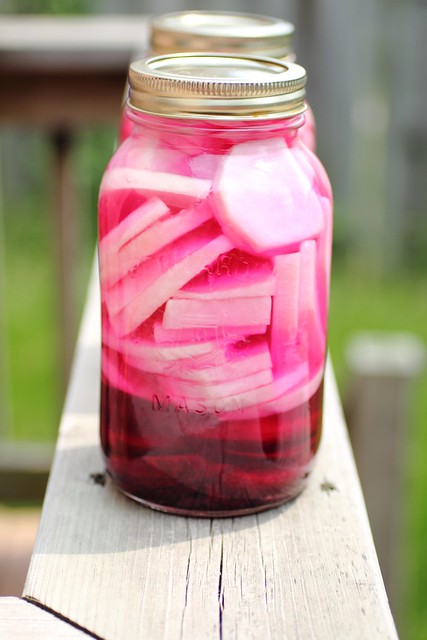
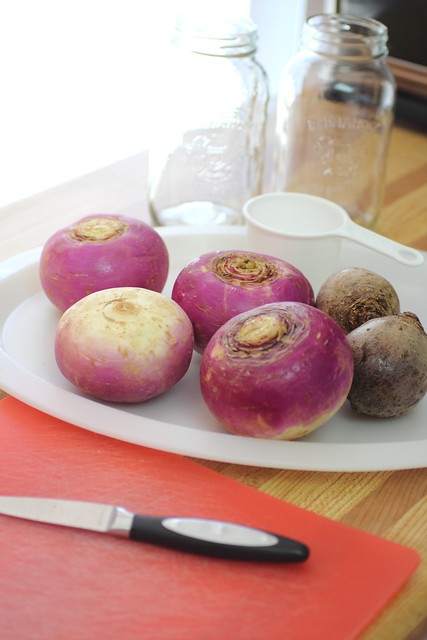
 مخلل اللفت و الشمندر
مخلل اللفت و الشمندرالمقادير:
5 ملعقة كبيرة ملح خشن ( ملح ذو الحبوب الكبيره )
من ملعقة طعام الى اثنان خل
ملعقة صغيره سكر
لتر ماء
حبة شمندر ( بنجر ) لكل لتر من ماء التخليل
لفت
الطريقة:
- قطعي اللفت حسب الرغبة , قطعي الشمندر أيضاً حسب الذوق .
- تحضير ماء التخليل :
- امزجي السكر و الخل و الماء .
- اضيفي الملح بالتدريج . ضعي ملعقة من الملح و قلبي ليذوب الملح , و لمعرفة المقدار المناسب من الملح احضري بيضه نظيفة و ضعيها في الماء المملح ستلاحظين أنها ستكون في اسفل المرطبان الزجاجى و سترتفع كلما اضفت ملعقة جديدة من الملح , اضيفي ملعقة أخرى من الملح و حركي و هكذا حتى تصل البيضة إلى منتصف المرطبان الزجاجي وليس اكثر والا اصبح المخلل مالحا جداً .
- اضيفي اللفت و حبة الشمندر و اغلقي المرطبان باحكام لمدة اسبوعان .

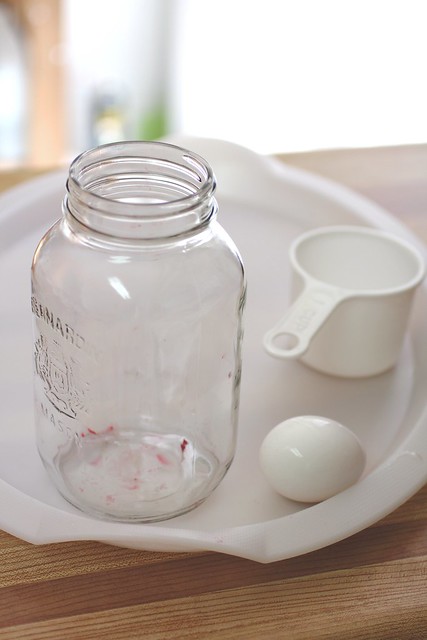

Pickled Turnip and beet
5 tbsp coarse pickling salt
between 1 - 2 big eating tbsp of vinegar
1 tsp sugar
1 beet (per each litre of water) I used 2, that's 1 per jar
Turnips ** I used 4
Directions:
Cut the Turnips and beets in whichever way you desire.
Prepare the brine for pickling:
- Mix sugar and vinegar and water
- Add salt little by little, so 1 tbsp at a time (mixing to dissolve)
To know the proper amount of salt in the water bring a raw clean egg (in it's shell) and gently lower it into the water.
The egg will start off at the bottom, making it's way up in the water with the more salt you add into the brine.
It should neither float nor silk, so it should be suspended in the middle of the jar, any higher and it would be too salty.
- Add your root vegetables (Turnip and Beet) into the jar and seal the jar (close) and let sit on the counter for 2 weeks (then transfer into the fridge) and enjoy!!
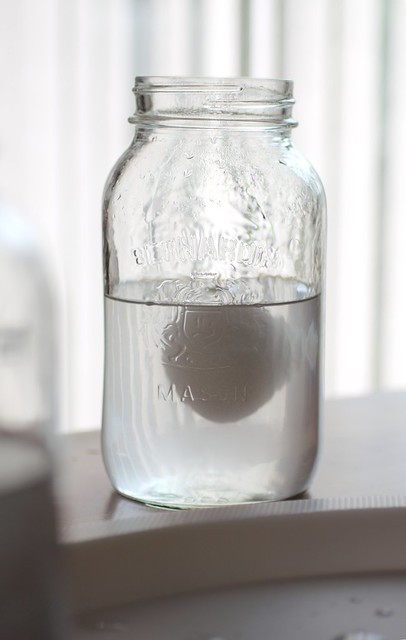
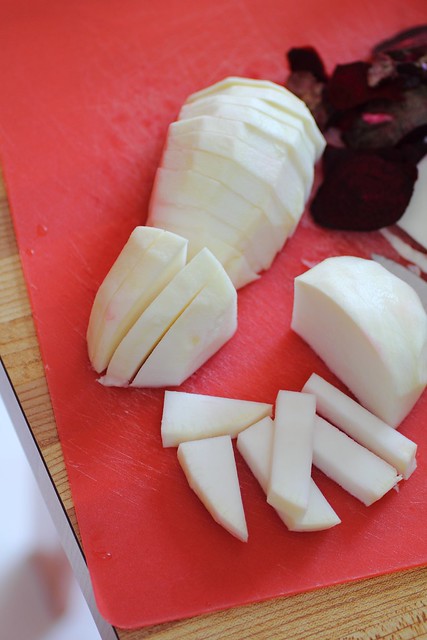

** For a twist, add garlic cloves, or even hot chili peppers in the jar.
Translated recipe by me, originally posted here
Update: I opened one of the jars to check on it because the water level was a bit high and it was like opening a bottle of pop that has been shaken, so beware, let the gasses slowly be released before opening (remember turnips are like cabbage, gassy vegetables)
The salt level was perfect but they weren't crispy yet, they did get limper and lose water so there was more room in the jar due to the shrinking of the veg.
Update: I opened one of the jars to check on it because the water level was a bit high and it was like opening a bottle of pop that has been shaken, so beware, let the gasses slowly be released before opening (remember turnips are like cabbage, gassy vegetables)
The salt level was perfect but they weren't crispy yet, they did get limper and lose water so there was more room in the jar due to the shrinking of the veg.
These are not your regular pickled beets in a can or jar, they are not previously boiled so they are crisp and delicious. You may recognize the pink turnips from the last shawarma sandwich you picked up from a Middle eastern place.
Easy to make and so good, a condiment staple in every Arabic house.

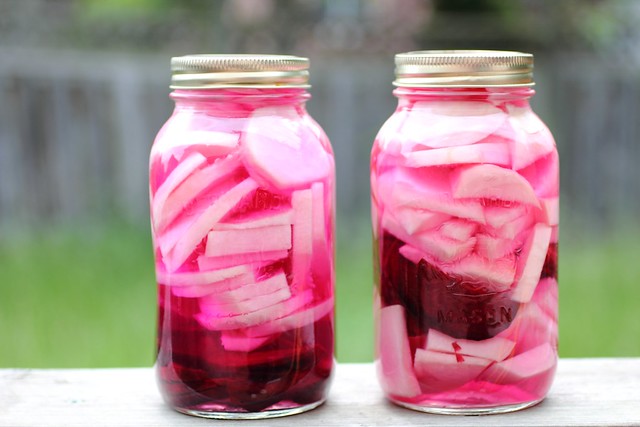

very nice! I think sometimes I saw jars of pickles sold in Middle Eastern markets. But the home-made stuff is always better.
ReplyDeleteOh wow. Do you know how much I love these? My tummy takes in all it can handle when I'm in Egypt. Thanks for sharing. I'm going to be making this super soon!
ReplyDeleteWould love to try these! How much water did you use? Thanks.
ReplyDeleteBonny
this is amazing. i've been wanting to make these for months. thanks so much for sharing : )
ReplyDeleteI used 4 cups water for the entire recipe. Everything was split among 2 jars. Turnips packed really tightly had some water rising at the end so I poured a bit out of the top at the end. It's not a fussy recipe as long as the salt level is good its good to go and if you like them more vinegary add more.
ReplyDeleteHi,
ReplyDeleteDid you sterilize the jars and tops?
Is that necessary?
Thank you....
Hi there,
ReplyDeleteNope I did not sterilize the jars, I just ran them in the dishwasher to remove any dust and then I used them.
You don't even need to use the mason jars that have a seal lid, my grandfather used to use the nescafe long jars with plastic red lid.
I now keep the jars a little open at the top to allow gas to escape, so it does not over flow.
Loved this post.
ReplyDelete